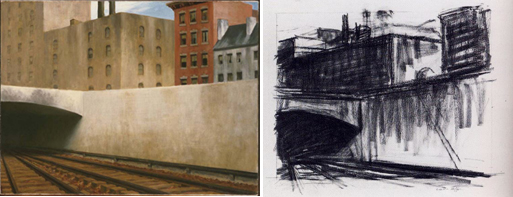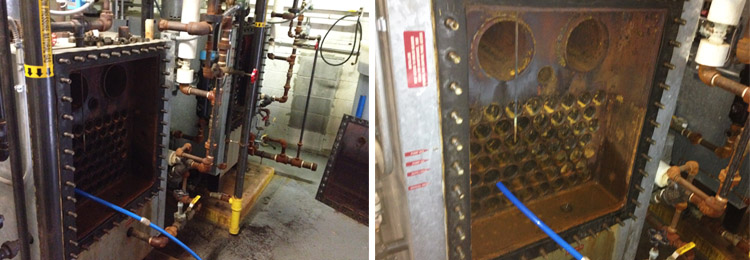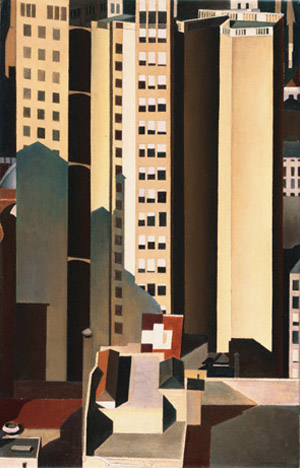
(Left) Edward Hopper, Sunday, 1926, Oil on canvas 29 x 34 in.; 73.66 x 86.36 cm. Acquired 1926. Paintings, 0925, American. The Phillips Collection, Washington DC. (Right) Edward Hopper, Approaching a City, 1946, conte on paper, 15 1/16 c 22 1/8 in., Collection of Whitney Museum of American Art, New York; Bequest of Josephene N. Hopper, 70.869.
To learn more about this painting on the anniversary of Edward Hopper’s birth, below is an oral history transcript from the Archives of American Art in which Hopper was asked about what gives this work its intense feeling. See the painting on view in the Made in the USA show through August 31.
JOHN MORSE: Mr. Hopper, I’d like to ask you about one particular picture that made a great impression on me when I first saw it at the Whitney exhibition, and still does, although now it’s in the Duncan Phillips Collection in Washington. That’s Approaching a City, and I’m quite sure, or how I could put it into words, the particular appeal of this picture—maybe it’s impossible—but I would like to hear what you have to say about it.
EDWARD HOPPER: Well, I’ve always been interested in approaching a big city in a train, and I can’t exactly describe the sensations, but they’re entirely human and perhaps have nothing to do with aesthetics. There is a certain fear and anxiety and a great visual interest in the things that one sees coming into a great city. I think that’s about all I can say about it.
JOHN MORSE: Well, in painting this picture were you aware of these wonderful solid geometric forms that took my eye at once?
EDWARD HOPPER: Well, I suppose I was. I tried for those things more or less unintentionally.
JOHN MORSE: Would you go so far as to say it’s almost a subconscious result, effect?
EDWARD HOPPER: Yes, I think so.
JOHN MORSE: But what was in your mind when you were painting it, I gather then, was this feeling of approaching a city?
EDWARD HOPPER: Yes.
JOHN MORSE: Thank you.
From: Oral history interview with Edward Hopper, 1959 June 17, Archives of American Art, Smithsonian Institution. http://www.aaa.si.edu/collections/interviews/oral-history-interview-edward-hopper-11844


